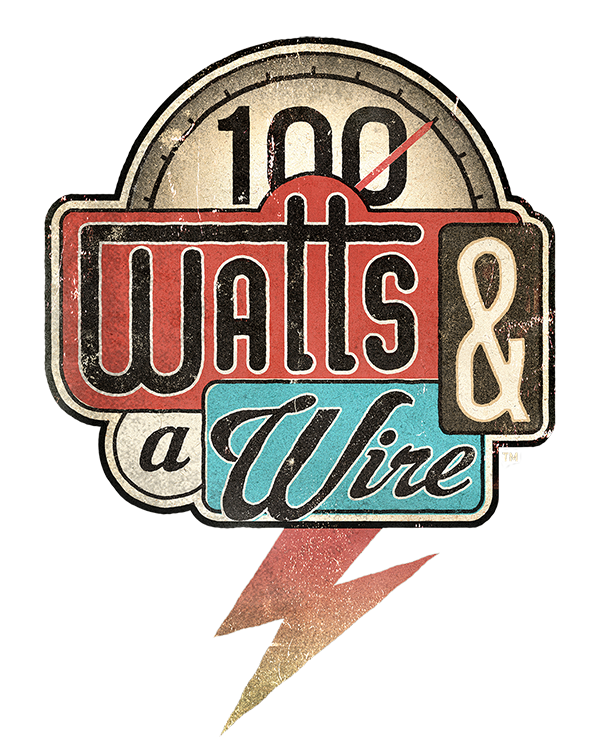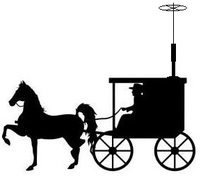I basically decided to "start from scratch" so that I could talk you through what I did, what measurements I took, etc. With that being said here we go.......
Step 1?
The analyzer I have is the RigExpert AA-54, so I exported the charts to my computer after taking my readings - it was my first time playing around with this feature. I didn't realize how powerful it was! As I tune the rest of the Hamsticks I might take my laptop along out and use it in the "live" mode. After tuning for lowest SWR at 7.212 this is what I had:
Also, take note of the subset box. You can see that at the lowest SWR the impedance of the anteanna is 58.5+j38.6. In my mind this seems like a funny place to start matching from. My gut (Elmer's jump in if I'm wrong!) tells me that I should be starting from a point where the antenna impedance is pure resistance, i.e. starting from a resonant point, instead of a low SWR point. I actually had two of these points "relatively" close to the low SWR point. One of the neat things with loading the data from the analyzer onto the computer is that I can show you those two points on the same graph:
The second resonant point, below, is up at about 7.261MHz (thats as close as the resolution of this graph will show anyway). At that point we've got an impedance of 125.1 +j2.2 ohms for an SWR of 2.5:1 which isn't horrible.
Step 2
After re-tuning so that resonance was at 7.212 my chart looks like this:
Step 3
Oh - on a final note, I re-tuned my 75 meter Hamstick too. Resonance was very close to low SWR on that one, so the adjustment's weren't nearly as extreme, or as exiting, so I didn't bother sharing the graphs of those.

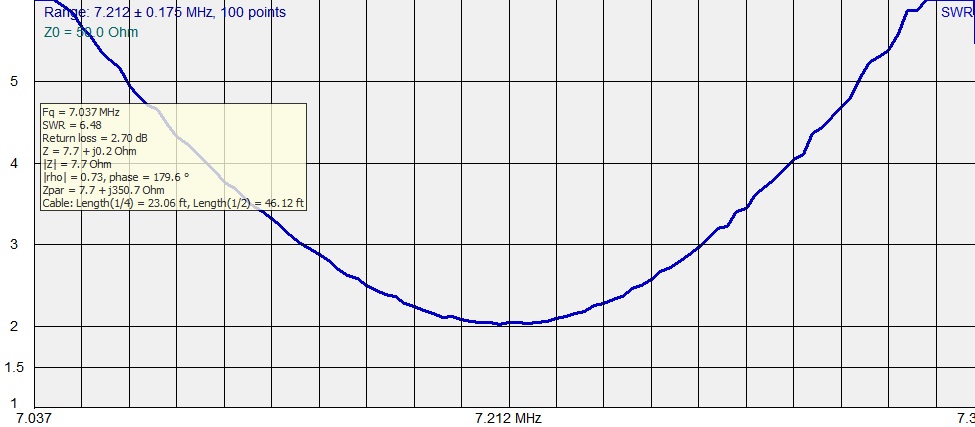
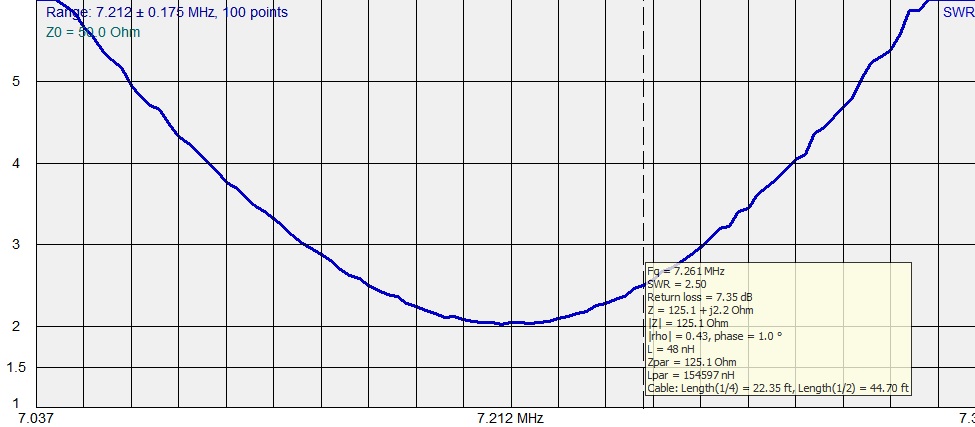
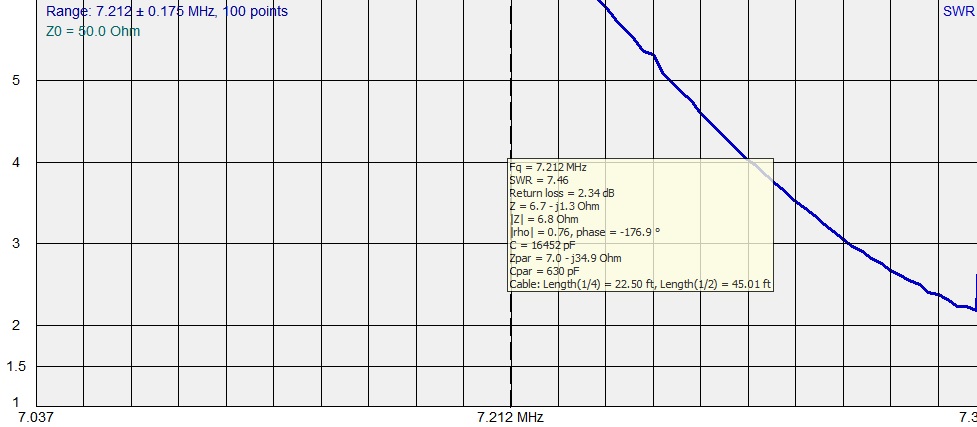
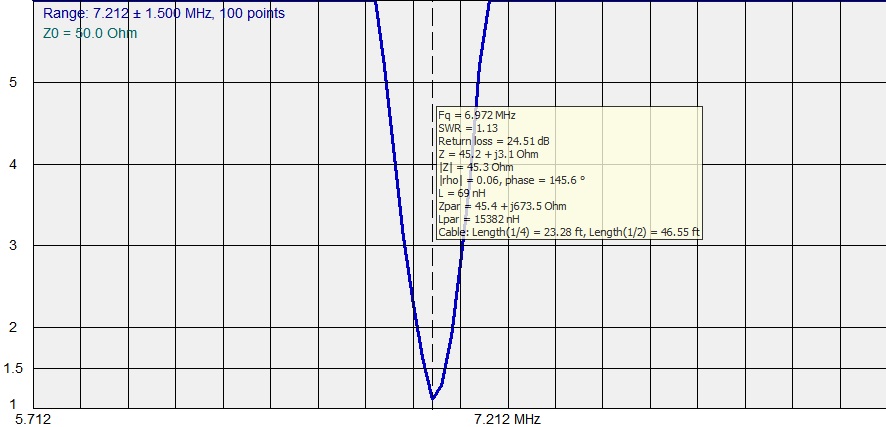
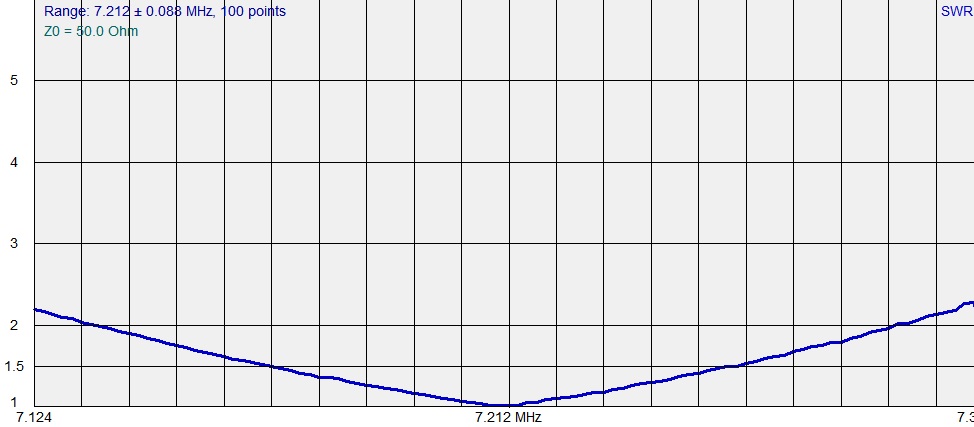
 RSS Feed
RSS Feed


